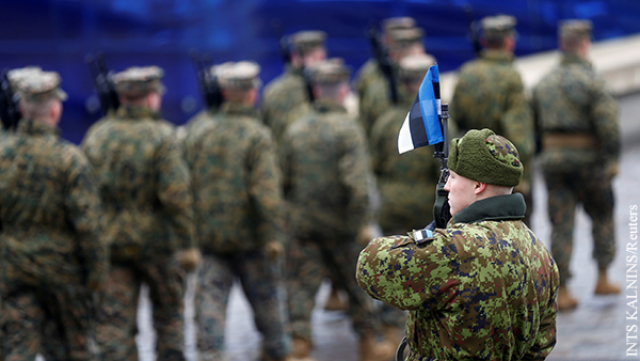Tallinn. November 20. INTERFAX - In Estonia, work began on Saturday on the construction of temporary barriers on the first sections of the land border with Russia in Narva in the northeast of the country, as well as on the banks of the Piusa River in the southeast of the republic.
"The Estonian-Russian border in the northeast is mostly blocked by a natural water barrier. Therefore, the police and the Defense Forces are strengthening the only dry area here, in the former Narva riverbed, where the risk of illegal border crossing is highest," Urmas Elm, head of the operational headquarters of the Eastern Prefecture, told reporters.
In connection with construction work, flights of airplanes and unmanned aerial vehicles are prohibited in the areas bordering Russia until November 26.
The Border Department has mapped ten sites where, in total, up to 40 kilometers of barbed wire barriers will have to be stretched.
Work on the construction of temporary fences is being carried out at an accelerated pace due to the migration crisis on the border between Belarus and Poland.
According to Egert Belichev, Deputy Director General of the Department of Police and Border Protection, "currently, migration pressure in Estonia is not increasing, but if the situation changes, the installation of temporary fences will become an important component to prevent the mass penetration of illegal migration and the entire border protection operation."
The government has attracted about 1,700 reservists of the Defense Forces to carry out the work, who were called up on Wednesday for a surprise exercise.
Currently, about 25 kilometers of the border have been arranged on the Estonian side, and work is underway on the next section with a length of 39.5 kilometers. Another 40 kilometers of temporary barriers to be erected during the training camps of the Defense Forces will allow a total of more than 100 kilometers of a physically equipped border to be established.
The total length of the Estonian-Russian border line is 338 kilometers, of which 76 kilometers run along the Narva River and 127 kilometers along Lake Peipsi. The 135 km long land border runs mainly through rugged terrain and in forested areas, where nature itself serves as a natural barrier for violators, and therefore it is really necessary to build a border infrastructure for 115 km.
It is planned to provide the land plot with high-tech equipment, install an electronic security system. Drones will be used at the border, any crossing will be recorded by sensors. In addition, the construction of a fence with a height of 2.5 meters for about 90 kilometers will be completed.

